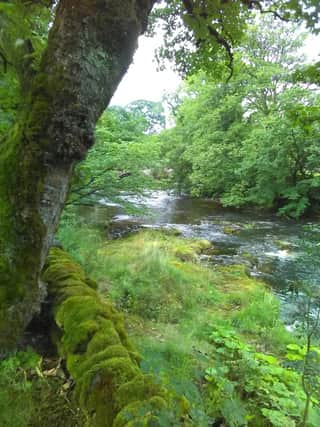Environment: Community Energy is the way forward


Wind energy. As they get closer to the city centre they will begin to see the solar panels on many houses. Solar energy.
However, these energy sources are dwarfed by the historical water energy provided by the four rivers from the west and the mighty Don from the north, which eventually hoovered up the Sheaf, Porter Brook, Rivelin and Loxley. Between them, they powered nearly 200 watermills over the centuries! Water energy.
Advertisement
Hide AdAdvertisement
Hide AdThese rivers gave Sheffield manufacturing clout, especially cutlery. Nature’s bounty, free, 24 hours a day! However, thanks to technological advances, coal became the energy supplier for steel production, making Sheffield the “Steel City”.


However, the fossil fuel that powered the Industrial Revolution, coal, also caused terrible pollution.
Edward Carpenter, a Sheffield icon in the Victorian era, could not live in the city, but took a cottage in the countryside, where he saw Sheffield as “Only a vast dense cloud… down there a hundred thousand grown people, let alone children, were struggling for a little sun and air, toiling, moiling, living a life of suffocation, dying (as the sanitary reports only too clearly show) of diseases caused by foul air and want of light — all for what? To make a few people rich!” (1889)
Today, fossil fuels are still heating our climate and our world, and our citizens are also in an energy crisis.
Advertisement
Hide AdAdvertisement
Hide AdThe National Grid costs have gone through the roof, powered by imported oil and gas, thanks to privatisation and a government incapable of administering the nation!
It is time to think differently, very differently, and get back to a Natural Grid where communities, working with nature, generate and own their local energy.
This will help meet one of the goals of the 2016 Sheffield Council Green Commission Report: “Energy is generated and distributed locally by individuals and businesses”.
Unfortunately, this is contradicted by Labour’s plan for a national grid, i.e. Great British Energy. Any UK centralised energy distribution, for example, the National Grid, has proved to be very expensive and subject to imported fossil fuel, as we have so bitterly experienced.
Advertisement
Hide AdAdvertisement
Hide AdFirst challenge: why do we need air conditioning in our buildings?
According to the International Energy Agency, the use of air conditioning and electric fans is responsible for nearly 20 per cent of the total electricity used in buildings worldwide, and by 2050, the number of air conditioning units will be more than three times what it is today, requiring as much electricity as the entire current energy consumption of India and China.
How did we even get there? It is because we approached the problem with a technology mindset, which leads to correcting a problem that should not be there in the first place.
Correction, even refitting, is much more expensive.
So, why not design a building that keeps the building naturally cool?
Advertisement
Hide AdAdvertisement
Hide AdThis was done 2,000 years ago when Persians sited buildings near underground alluvial streams, and using wind towers, brought the cold air from the water into the building.
The question is how to change this.
We first have to change the way we experience and value nature.
We would do well to go back almost to pre-history to see how our forebears did it.
They worked with nature. They did not exploit it. Whether it was wind or water mills or Archimedean screws, it was always renewable – not consumed.
Advertisement
Hide AdAdvertisement
Hide Ad“We cannot solve our problems with the same level of thinking that created them” (Einstein). So, we need to take different approaches.
We must focus on the local Natural Grids which nature provides – free, the sun, wind and water.
When the oil crisis hit in 1973 and fuel bills quadrupled Denmark reacted by building over 100 natural grids.
By 2022 their GDP had doubled and energy use diminished.
Our recent ancestors knew this. Take Grassington in the Yorkshire Dales: the first hydroelectric plant at Linton Falls was constructed in 1909 by the Grassington Electric Supply Company on the River Wharfe.
Advertisement
Hide AdAdvertisement
Hide AdThe power was distributed throughout Grassington on cables and attached to the chimney stacks of the buildings in the town.
After passing through two owners the Linton Mill was re-established by JN Bentley in 2012, who re-engineered the site, installing two Archimedean screw turbines to generate enough electricity for 90 houses.
The re-engineering of the plant also minimised the impact on the local wildlife on the banks and water.
Additionally, the screws are wide enough to allow small objects, such as leaves and fish to pass through with harm.
Advertisement
Hide AdAdvertisement
Hide AdConsequently, with these examples in mind, I suggest that our task has to be to persuade councils and developers to make energy conservation the primary objective in any new builds – and to persuade people to conserve energy.
Then we can, in parallel, make the case for natural grids.
A conference will be held on March 16 to discuss and plan a way ahead on this basis: Expanding Community Energy in South Yorkshire at the Cemetery Road Baptist Church.
Reference: Carpenter, Edward. 1889 Essay Civilization: Its Cause and Cure.